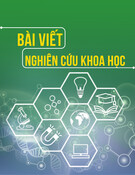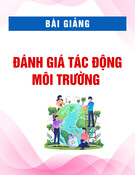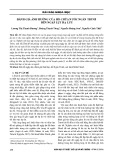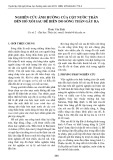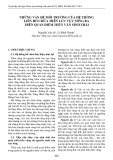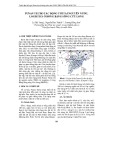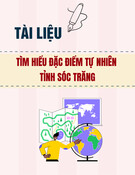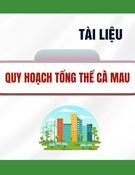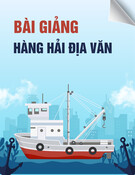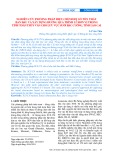
JOURNAL OF SCIENCE AND TECHNOLOGY DONG NAI TECHNOLOGY UNIVERSITY
54
Special Issue
APPLICATION OF TWO-DIMENSIONAL HYDRODYNAMIC
MODEL (MIKE21HD/FM) TO ASSESSING THE IMPACT OF SAND
MINING IN THE LO RIVER AREA AND PROPOSING
MANAGEMENT SOLUTIONS
Vu Thi Lan Anh1,2*, Nguyen Van Dung1,2, Nguyen Phuong Dong1,2, Pham Thi Thanh Hai1
1Hanoi Univesity of Mining and Geology
2Natural Resources and Environmental Management
*Corresponding author: Vu Thi Lan Anh, vuthilananh@humg.edu.vn
GENERAL INFORMATION
ABSTRACT
Received date: 22/3/2024
Phu Tho is a province with a developed mining industry,
making an important contribution to economic development,
creating jobs for people. In particular, the industry of
exploiting sand as construction materials is also of interest to
meet construction needs. However, the sand mining process
impacts the environment, landscape and land area in the
surrounding area. Therefore, research on application of two-
dimensional hydrodynamic model (MIKE21HD/FM) to
evaluate the impacts on river banks due to Song Lo sand
mining activities, the section through Phu My commune, Phu
Ninh district, Phu Tho province is necessary. In particular,
sand mining lowers the river bottom, potentially changing
basic hydraulic parameters such as water level, flow velocity
and flow direction. The results show that after dredging all
areas to the design exploitation height, the water level
fluctuates from 22.16m to 20.2m. Along the center line from
T1 to T10, it can be seen that the water level fluctuates,
lower about 0.01m (or 1cm). From there, propose
environmental management measures in sand mining,
ensuring sustainable economic development goals.
Revised date: 10/05/2024
Accepted date: 10/08/2024
KEYWORD
MIKE 21FM;
Sand mining;
Sustainable economic
development.
1. INTRODUCTION
The explosion of the global population and
urbanization (especially along coastal zones)
has ballooned the commodification of sand
and sand trade flows in the global system that
has inextricably created unintended livelihood
and ecosystem ramifications, notably marine
biodiversity loss, a decline in marine food
resources, water, and air pollution, agricultural
land degradation, and extreme weather events
(e.g. coastal flooding) which have all been
linked to anthropogenic climate change.
Sand is the 3rd most important natural
resource after air and water (Ludacer, 2018),
and is the second most exploited resource and
the leading traded commodity by weight
accounting for about 85% of the annual
volume of minerals mined globally (Filho et





